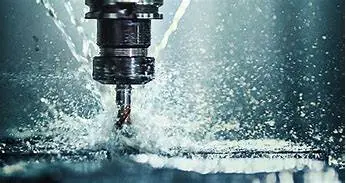CNC Machining tips – Flat bottom tools
The importance of proper tooling
Behind every successful machining process lies proper tooling.
When dealing with any aspect of fabrication, it is essential to use tools purposely-built for such tasks. As milling tools serve best for developing milling parts, so does finishing tools work best for finishing.
Benefits of working with Flat bottom tools
The CNC machining process is riddled with a number of operations from start to finish. Because of this, we have different tools for different operations and today, we focus on a very important category – Flat bottom tools.
Over our years of working in CNC and other fabrication aspects, Flat bottom tools have won our hearts and that of our machines. This is because of a number of reasons. Here’s a list of 5 reasons why we love and encourage the use of flat bottom tools:
Functionality and Diversity
Flat bottom tools are generally more functional than other types of tools. It is very easy to see how flat bottom tools can have multiple applications in the long list of drilling operations that one may encounter in machining. For instance, flat bottom tools often make possible cleaner surfaces and perfectly drilled holes due to their flat geometry in thin-plate drilling. This is also made possible as their balance means they can equal downward forces.
Although regular tools are also usable in thin-plate drilling, we may not be able to attain the type of perfection desired when pushing materials through the exit hole. Flat bottom tools are suitable for all thin plate drilling, cross hole drilling, angled drilling, half hole drilling as well as rounded surface drillings.
Machining costs
Flat bottom tools are not only diverse, they are more affordable and cost-saving too.
As Machinists, we strive to cut unnecessary costs however we can. Flat bottom tools afford us this in about 3 ways. First, flat bottom tools save time by fitting exactly as they should. What this means is that you do not have to spend extra run time trying to fit your tools. Second, flat bottom tools are more solid than other tools because of their geometry. Lastly, flat bottom tools, especially carbide-fit ones, are usually by far more durable than other traditional tools. This helps to save frequent maintenance and replacement costs.
No burrs
Many traditional machining tools are more likely to create burrs than flat bottom tools. Flat bottom tools give avenues for regular and straighter holes, avoiding undesired burrs on the opposite side of the material you’re working on.
Stability
From half to full holes and even angular drilling, flat bottom tools have proven themselves to be of utmost advantage. Their geometry and balance brings the much-needed stability when working on inconvenient parts of your material.
Flat bottom tools are perfect for tilted and angular functions as they can remain effective even when inclined.
Corrections and Perfections
While we’ve already listed all the great things that you can get done with flat bottom tools, their effectiveness and accuracy when trying to make corrections is laudable. Flat bottom tools can be used to spot face and counter-bores on irregular surfaces, remove drill points, end mill dishes and straighten misaligned holes.










